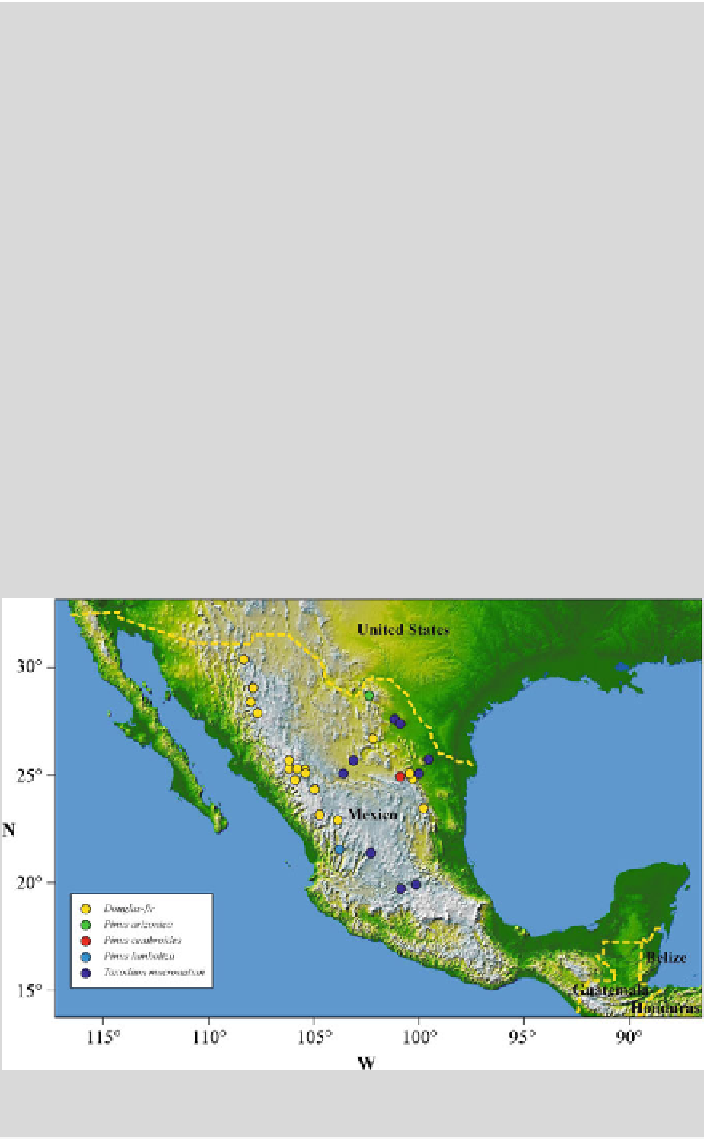Geoscience Reference
In-Depth Information
Box 7.6 A network of tree-ring chronologies for northern
and central Mexico
The mixed conifer forests and riparian areas of northern and central Mexico
contain some of the most climate-sensitive species in the North American
species that has been widely recognized due to its sensitivity to climate (Fritts
Northern Hemisphere and extending well into southern Mexico at latitudes
below 17
◦
N. In Mexico, Douglas-fir occurs in scattered insolated popula-
tions of mixed conifer forests located at high elevations, thriving in cool
microenvironments and scarped terrains of the Sierras Madre Occidental
ically divided into two distinct layers: the earlywood (EW) is composed
of low-density, light-colored cells, whereas the latewood (LW) has smaller,
darker cells with thicker walls. The development of separate EW and LW
chronologies provides more information on the influence of intra-annual cli-
Box Fig. 7.11
Tree-ring chronologies in Mexico

